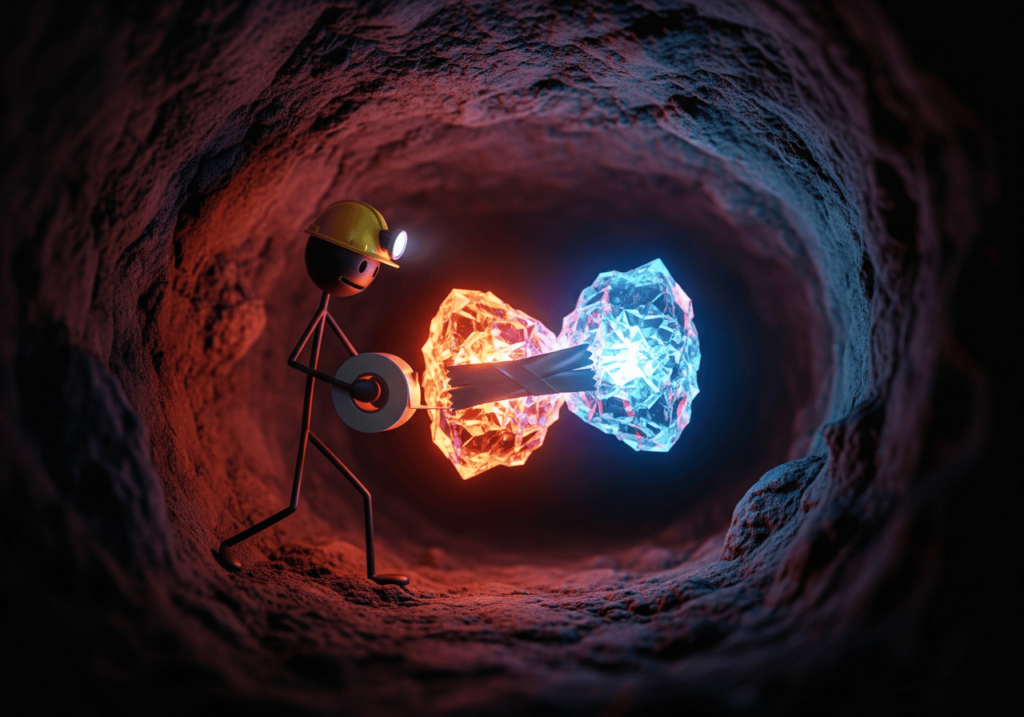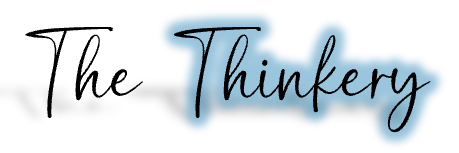You’ve had this moment.
It’s 2 AM. You’re staring at the ceiling, or you’re in the shower, or you’re stuck in traffic. And then, BAM. A lightning bolt hits your brain. An idea, so brilliant, so elegant, so perfectly original, lands fully-formed in your mind.
It could be a genius business concept, a profound philosophical insight, a hilarious joke, or a plot for the great novel you’re definitely going to write.
For a glorious few minutes, you are a titan of creativity. A genius. You are the sole possessor of this beautiful, unique thought-creature.
And then you make a fatal mistake.
You Google it.
And there it is. On a blog post from 2008. In a forgotten patent from 1993. In a quote from some ancient Roman philosopher. Not only has someone already had your idea, but they probably had it better, and they had it when your parents were still in high school.
The feeling is universal. It’s a specific kind of deflation, the sense that you’re just an echo in a very, very crowded room. This leads to a deeply unsettling question in our hyper-connected world:
In a world of 8 billion living people, on top of the 100 billion or so who have ever lived, is it even possible to have a truly original idea?
It feels like the answer is no. It feels like the entire landscape of human thought has been strip-mined, every last nugget of insight discovered, polished, and uploaded to the cloud.
To figure this out, we need to stop thinking about ideas as things we create and start thinking about them as things we discover.
The Great Idea Mine
Imagine that all possible ideas—every scientific theory, every melody, every philosophical concept, every recipe, every joke—exist in a single, infinitely vast space. Let’s call it the Idea Mine.
Every human who has ever lived is an Idea Prospector. We’re all born with a little headlamp and a pickaxe, and we spend our lives wandering through the mine, digging for these crystals of thought.

The first prospectors—the ancient Greeks, the early scientists, the foundational philosophers—had it easy in some ways. The biggest, most obvious veins of idea-ore were lying right near the entrance of the mine. If you were the first person to start digging in the “Physics” or “Logic” tunnel, you were going to find some massive, world-changing stuff pretty quickly. Aristotle and Newton came out of the mine with wheelbarrows overflowing with giant, gleaming crystals.
But over the millennia, billions of prospectors have been digging. The main tunnels are well-lit and crowded. The easy-to-reach stuff is mostly gone.
So, when a modern prospector (that’s you) goes digging, you’re not just competing with the 8 billion people currently in the mine. You’re walking through tunnels carved out by everyone who came before you. It’s no wonder that when you find a shiny little crystal you think is new, you look up and see a little plaque on the wall that says, “Plato Was Here.”
This seems depressing. It seems like we were born too late, and all the good ideas are taken. But that’s only if we’re using the wrong definition of “original.”
The Two Types of Originality
We need to break down the word “original” into two different concepts.
1. Absolute Originality (The Unicorn Idea)
An Absolutely Original Idea is a thought that has never, ever been had before by any human in any form. It’s not just a new combination of old ideas; it’s a fundamentally new category of idea. It’s like discovering a new primary color, not just mixing blue and yellow to get green.
These ideas are so rare they might as well be mythical. Maybe the first person to conceive of the number zero had one. Maybe the inventor of language had one. But in our world, the chances of finding a true Unicorn Idea are basically zero. The mine is just too well-explored.
Chasing Absolute Originality is a recipe for misery. It’s the pressure that paralyzes artists and thinkers, the fear that if your idea isn’t 100% unprecedented, it’s worthless.
But there’s another, much more interesting and useful, type of originality.
2. Connective Originality (The Remix Idea)
This is the act of taking two or more existing ideas—ideas that other prospectors have already dug up—and connecting them in a way that has never been done before. You’re not creating a new element; you’re creating a new alloy. The alloy has properties that neither of its constituent metals had on their own.
This is where 99.99% of all human innovation comes from.
- The Smartphone: Someone took the “telephone” crystal and the “internet” crystal and the “camera” crystal and fused them together. None of the parts were new, but the combination changed the world.
- Hip-Hop: Prospectors took the “spoken word poetry” crystal and the “drum machine” crystal and the “vinyl record sampling” crystal and created an entirely new art form.
- Evolutionary Psychology: This field was born when someone smashed the “evolutionary biology” crystal into the “human psychology” crystal.

The world isn’t running out of ideas. It’s running out of unconnected ideas. The number of individual ideas might be finite, but the number of possible combinations is virtually infinite.
How to Become a Master Connector
So, the game isn’t about being the most brilliant prospector who finds a Unicorn Idea. The game is about being the most interesting connector. How do you do that?
1. Widen Your Tunnels:
Most people spend their lives digging in one very specific tunnel. An accountant digs in the “accounting” tunnel. A biologist digs in the “biology” tunnel. They become experts in that one area. But because they never leave their tunnel, they only have access to one type of crystal.
A master connector is a curious wanderer. They’ll spend a while in the “18th-century poetry” tunnel, then wander over to the “quantum mechanics” tunnel, then poke around in the “ancient Mayan architecture” tunnel. They’re not looking to become an expert in any of them. They’re just collecting different kinds of crystals. The more diverse your collection of ideas, the more unique your potential connections will be.
2. Lean Into Your Unique Lens:
Here’s the secret weapon: no one in history has your exact combination of experiences, memories, and emotions. Your personal lens (as we’ve talked about before) is the one truly unique thing you bring to the mine.
An idea isn’t just the raw data of the thought; it’s that thought filtered through a human consciousness. When you have an idea, it’s being combined with you. Your specific sense of humor, your specific childhood memories, your specific heartbreaks.
Maybe someone else has had the idea to start a coffee shop. But have they had the idea to start a coffee shop inspired by your grandmother’s kitchen, with a playlist based on 90s sci-fi movies, and a business model informed by that one economics class you took in college? No. That’s your remix. That’s connectively original.
The question, “Is it possible to have an original idea?” is the wrong question. It’s a trap that leads to paralysis.
The right question is, “Can I make a connection that no one has made before in quite the same way?”
The answer to that is always, unequivocally, yes.
Stop worrying about whether your idea is a Unicorn. It probably isn’t. Instead, get excited about being a connector. Read a book on a topic you know nothing about. Talk to someone whose life is completely different from yours. Pay attention to the weird, specific things that make you you.
The future doesn’t belong to the people who find new things. It belongs to the people who find new ways for old things to belong together. Go be a connector. The mine is waiting.
